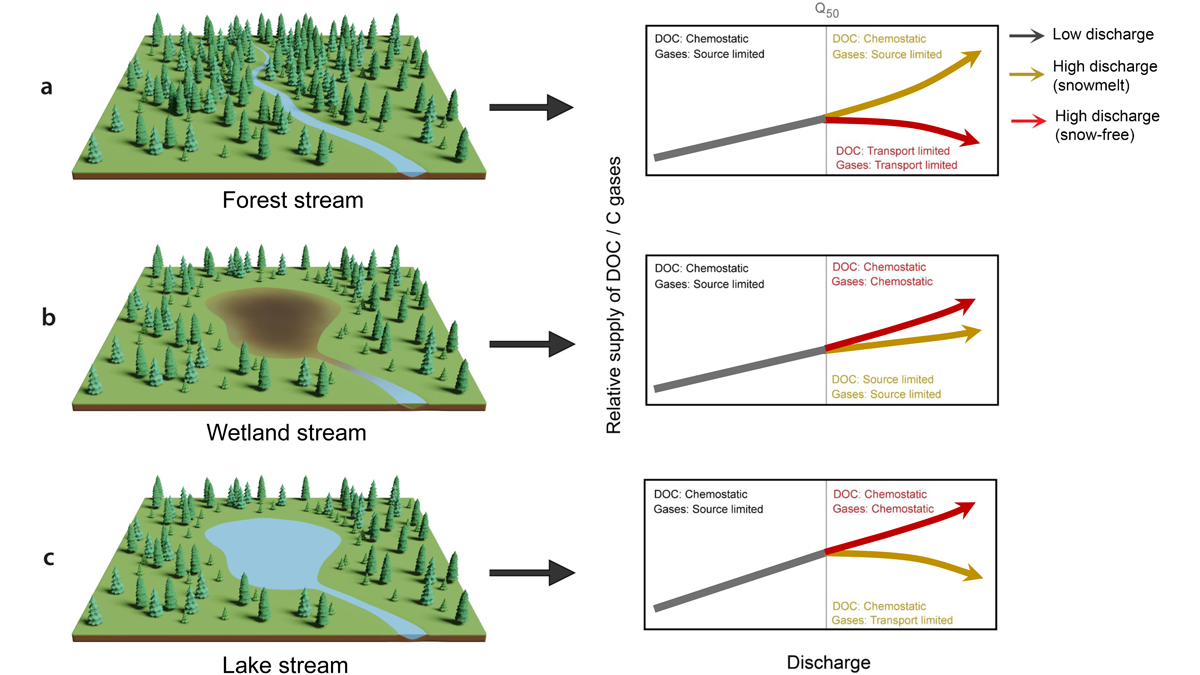Editors’ Highlights are summaries of recent papers by AGU’s journal editors.
Source: Water Resources Research
Gómez-Gener et al. [2021] used seven years of data from three catchments in northern Sweden to highlight the importance of the release of carbon dioxide and methane to the atmosphere and the transport of dissolved organic carbon downstream.
Their study found that, during the snowmelt period, carbon export was dominated by the downstream transport of dissolved organic carbon. Carbon fluxes to the atmosphere were more important during large rainfall events in summer and autumn. However, the relationships between the amount of streamflow (i.e., discharge) and the concentrations of the different forms of carbon differed for the three catchments.
This highlights the important role of the interface between the land and the stream in storing carbon, transforming carbon, and regulating the export of carbon to the stream. It also shows that landscape heterogeneity needs to be considered when quantifying the flux of carbon from the land to the streams. These results are useful for understanding how changes in streamflow will affect the carbon balance of these ecosystems and whether these aquatic ecosystems are sources or sinks of carbon.
Citation: Gómez-Gener, L., Hotchkiss, E. R., Laudon, H., & Sponseller, R. A. [2021]. Integrating discharge-concentration dynamics across carbon forms in a boreal landscape. Water Resources Research, 57, e2020WR028806. https://doi.org/10.1029/2020WR028806
—Ilja van Meerveld, Editor, Water Resources Research

